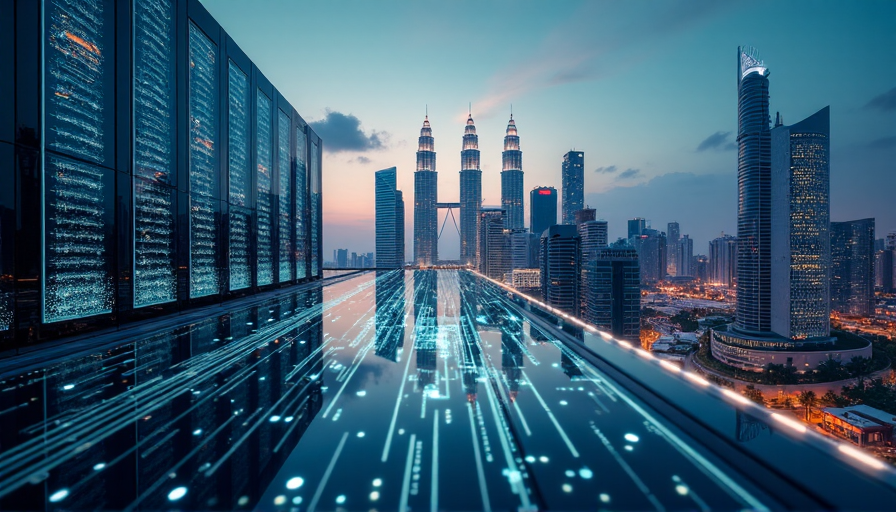
Malaysia's AI Future at a Crossroads: Navigating US Tariffs and Global Trade Uncertainty
Malaysia's quest to become a regional powerhouse in artificial intelligence (AI) now faces a significant hurdle: the imposition of new US tariffs. These tariffs, primarily targeting Chinese goods, have sent ripples through global supply chains and pose a direct challenge to Malaysia's tech ambitions.
The Impact on AI Infrastructure
Dr. Azree Shahrel Ahmad Nazri, president of the AI Society, emphasized that Malaysia's role as a key tech manufacturing hub is under threat. The nation depends on imported components such as servers, processors, and networking equipment to fuel its AI initiatives and data centre investments. With these components now subject to higher costs and supply disruptions, critical projects like a major RM1 billion data centre in Johor have already experienced a 15% surge in costs, adding an extra RM150 million to their budgets.
Such price hikes not only delay project timelines but also risk derailing Malaysia's long-term strategies to lead in the digital economy. Although exemptions exist for semiconductor products, uncertainties about rising costs persist, leaving the nation vulnerable to external trade policies.
Learning from Regional Success
In response to the challenges posed by tariffs, experts suggest that Malaysia could benefit from adopting localization strategies similar to Indonesia's Tingkat Komponen Dalam Negeri (TKDN) policy. This policy mandates that a portion of tech products include locally manufactured components, thereby bolstering domestic production. In Indonesia, this has led to the establishment of assembly lines in Jakarta, strengthening the country’s resilience against global trade shocks.
Moreover, Malaysia’s government initiative, AI@Work 2.0, developed in collaboration with Google, exemplifies a forward-thinking approach to reducing reliance on foreign technology. While AI@Work 2.0 focuses on the adoption of AI tools in the public sector rather than hardware manufacturing, it mirrors the localization philosophy. The initiative is steering efforts to develop local AI solutions, such as the hypothetical PutraGPT, which could run parallel to global platforms like Google Gemini and enhance government operations.
The Broader Global Trade Context
Trade analyst Dr. Carmelo Ferlito highlights that the recent tariff measures are not solely about protectionism. According to him, US tariffs are also a strategic tool intended to re-center global trade negotiations around American interests. The imposition of a 24% tariff on Malaysian goods, along with other similar measures, signals a new era of economic uncertainty where countries must navigate a complex web of international trade relations.
Ferlito argues that Malaysia must seize this opportunity to foster stronger free trade partnerships, particularly within the ASEAN bloc and with key economies such as the European Union. He advises that while individual businesses may feel the immediate impacts, it is crucial for the government to engage in aggressive trade negotiations and reduce dependence on unpredictable global dynamics.
Seizing the Opportunity for Local Growth
The challenges brought on by US tariffs are not without potential benefits. They serve as a wake-up call to invest in local manufacturing capacities for AI hardware and software. With the right mix of government incentives—like tax breaks, subsidies, and skills training—Malaysia could bridge initial quality gaps and pave the way for a more self-reliant tech ecosystem.
In this rapidly evolving landscape, Malaysia's ability to adapt and innovate will determine whether it can maintain its regional leadership in AI. The current trade disruptions underscore the need for a balanced approach, combining short-term policy adjustments with long-term investments in technology and local industry development.
Ultimately, as global trade relations shift, Malaysia stands at a pivotal moment. By learning from regional counterparts and investing in local capabilities, the nation can turn these challenges into an opportunity to redefine its role in the digital economy.
Note: This publication was rewritten using AI. The content was based on the original source linked above.